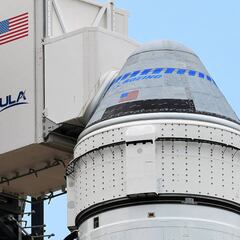What is the mission of the NASA - Boeing Starliner and the commercial crew program?
Boeing has launched its CST-100 Starliner spacecraft, as a part of NASA’s Commercial Crew Program. What is the mission?


NASA announced the successful launch of Boeing’s CST-100 Starliner spacecraft, which is scheduled to dock at the International Space Station on Friday, 20 May. While at the space station, the crew will deliver over five hundred pounds of cargo. The spacecraft will return on 25 May, landing the spacecraft in the desert in the country’s western portion. Boeing received $92.3 for the development of the CST-100 Starliner, a fraction of the $1.6 billion that NASA was allocated for the Commercial Crew Program. No crew members will be onboard the aircraft as the mission is in part a safety test of Boeing’s technology.
The mission also includes the launch of what NASA is calling a “next-generation spacecraft,” the United Launch Alliance (ULA) Atlas V, “to test the end-to-end capabilities of the crew-capable system.”
The launch took place at Cape Canaveral Space Force Station in Florida. After takeoff, NASA Administrator Bill Nelson commended the entire team’s efforts, saying, “I am so proud of the NASA, Boeing and United Launch Alliance teams who have worked so hard to see Starliner on its way to the International Space Station.”
What is the Commercial Crew Program?
The entire mission forms part of a public-private partnership between NASA and Boeing to create a commercial transportation system for astronauts to the international space station. Following the direction other federal agencies have gone, NASA has become a supplier of private sector contracts for what they say will help them more effectively complete projects. NASA took on Boeing to design a space transport system for NASA’s astronauts.
Boeing will be responsible for building the system based on NASA’s specifications in the bid for the contract they released. However, NASA has said that its “personnel” will be “heavily involved and oversee the processing, testing, launching, and operation of the crew system to ensure safety and reliability.”
Related stories
SpaceX has also developed a commercial crew transport system, including the Crew Dragon spacecraft, that began operating in 2020.
As NASA redefines its strategy in space, it found that it would need a “safe, reliable, and cost-effective means of getting humans to low-Earth orbit.” There aren’t many companies able to offer these services, but those who can are encouraged to submit proposals and designs to NASA. The hardware will be owned by the “hardware and infrastructure,” and NASA “engineers and aerospace specialists work closely with the commercial companies.” NASA benefits from the private sector’s efficiency, and the companies gain insights from NASA specialists and resources.

